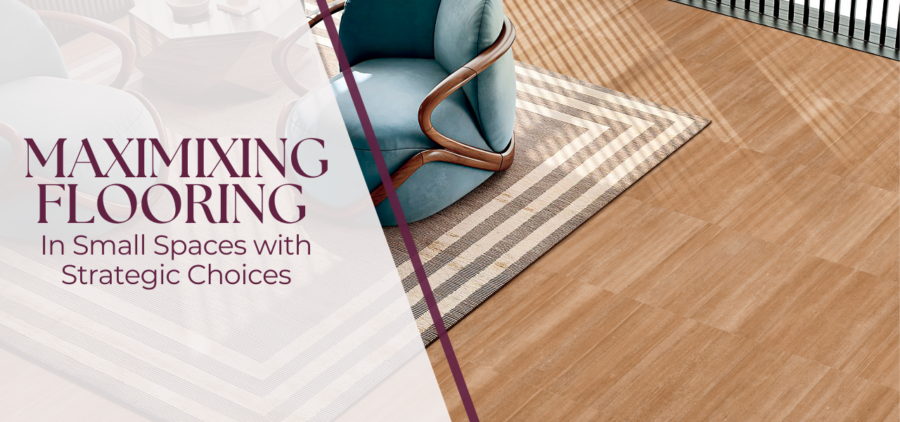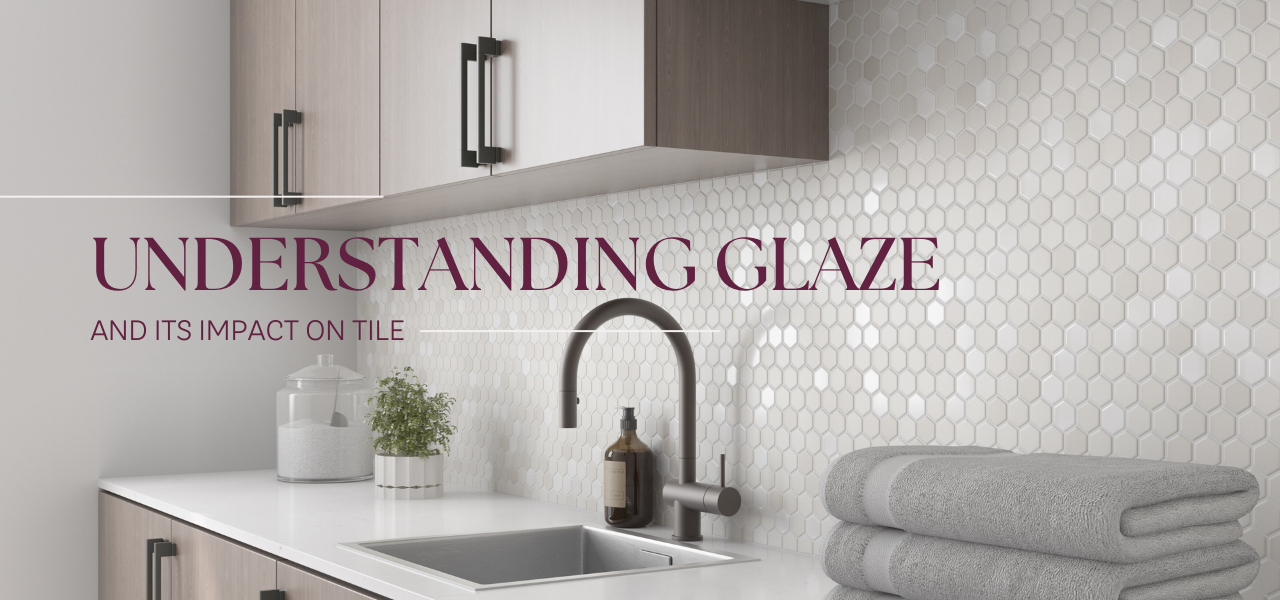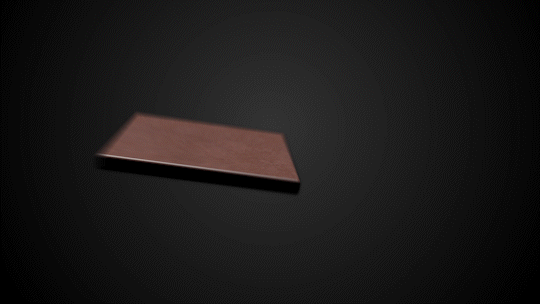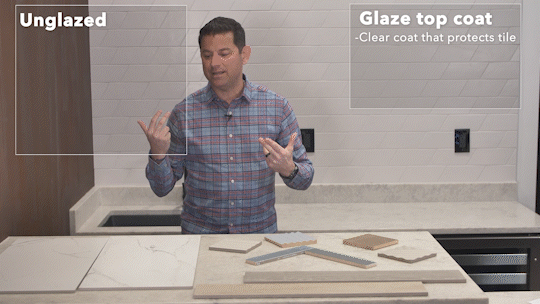

Understanding Glaze
and Its Impact on Tile
Tile selection isn’t just about color or pattern—it’s about glaze. Glaze defines the look, setting the tone for an entire space. A glossy finish can amplify light and create a striking, polished aesthetic, while a matte surface offers a softer, more organic feel. It’s the fashion of tile, shaping interiors across hospitality, retail, and commercial spaces. Whether it’s a bold, reflective statement in a hotel lobby or a subtle, textured backdrop in a corporate setting, glaze is the true design element at play. But not all glaze is created equal. Understanding their nuances can mean the difference between a space that simply follows trends and one that sets them.
Inspired by UMORE’s commitment to blending quality and style, this guide dives into the transformative power of glaze, highlighting its ability to protect tiles while enhancing their beauty. But before we delve into the technicalities, let’s address a crucial point: glaze is a key factor in determining the overall tile cost.

What Is Tile Glaze?
Tile glaze is a purposefully formulated coating applied to the surface of ceramic or porcelain tiles. It isn’t just a simple layer of paint; it’s a carefully crafted mixture of minerals and pigments fused to the tile during high-temperature firing. This process creates a durable, protective layer that enhances the tile’s beauty and functionality.
PEI Ratings
The Porcelain Enamel Institute (PEI) Rating measures glaze hardness, helping you choose tiles suited for varying levels of foot traffic. The right glaze ensures stunning surfaces with lasting durability.
MOHS Ratings
The Mohs scale of hardness is used to rate the scratch resistance of flooring materials, such as tiles. The scale ranges from 1–10, with 10 being the hardest material, diamond.
Glaze and Value: More Than Just Aesthetics
The manufacturing process for tiles involves multiple steps, but the glazing stage is where much of the artistry—and cost—comes into play. After the initial pressing, a tile can go through eight or nine different glazing operations, each adding depth, texture, and character.
Rotocolor: Precision Through Rolling
In this process, glaze is rolled onto the tile’s surface, creating consistent patterns and textures. It’s a controlled, efficient method that allows for intricate designs and layered effects.
Bell Glaze: A Smooth, Poured Finish
Bell glazing involves pouring glaze over the tile, ensuring full coverage and a seamless, even application. This technique is often used for achieving a more handcrafted finish, i.e., zillige tiles.
Inkjet & Synchronized Inkjet: High-Tech, High-Impact
The latest advancements in tile manufacturing include inkjet and synchronized inkjet technology. Inkjet printing allows for hyper-realistic designs, while synchronized inkjet takes it a step further—aligning the printed pattern with the tile’s texture for an ultra-authentic look. Think wood-look tiles where the grain isn’t just visual, but also textured to match.
Each of these glazing techniques plays a role in defining the final appearance and cost of a tile. From the type of glaze to the number of layers applied, every step in this process contributes to the overall price tag—making glaze not just a finishing touch, but the heart of tile design.
The Evolution of Tile Glazing
The tile industry constantly evolves, with new technologies emerging to create innovative glaze effects. The glazing process itself plays a crucial role in defining a tile’s final look and cost.
The speed of the glazing process is a major factor in pricing. A slower, more meticulous application—where multiple layers and techniques are carefully executed—results in a more refined, higher-cost tile. On the other hand, a faster, more streamlined process can produce tiles at a lower price point, making efficiency a key consideration in manufacturing.
UMORE’s Expertise: Sourcing and Consultation
At UMORE, we understand the intricacies of glaze and its impact on tile quality and value. Our expertise lies in sourcing the finest tiles and providing expert consultation to help you find the perfect match for your needs and budget. Whether you’re looking for a specific color, size, or finish, our team can guide you through the selection process, ensuring you make an informed decision.

Factors Affecting Glaze Performance
Several factors influence how effectively glaze performs, including firing temperature, the thickness of application, and the tile’s inherent material quality overall. Higher firing temperatures produce more complex, durable glazed tiles, while lower temperatures can make softer surfaces prone to scratching. A thicker glaze layer offers increased protection against chips or cracks but may require balancing to prevent unexpected firing issues. Material composition, firing conditions, and final thickness shape how well tile glaze withstands daily use, foot traffic, and cleaning products.
The Hidden Influence of Glaze in Tile Selection
Most people don’t realize that when selecting tile for a space, they’re really choosing `glaze. The finish of a tile—whether glossy, matte, or textured—defines the atmosphere just as much as the color or pattern. A high-gloss glaze creates a polished, reflective environment, perfect for making lobbies and open spaces feel bright and expansive. On the other hand, a matte glaze softens the look, offering a more natural, understated elegance.
Every design choice—whether it’s achieving the depth of natural slate or the subtle texture of limestone—comes down to glaze. It shapes the way light interacts with a surface, enhances the overall aesthetic, and even influences how the space feels. So when considering tile, it’s not just about the material; it’s about how glaze brings the vision to life.
Enhancing Tile Beauty with Glossy and Matte Finishes
Tile beauty significantly increases when glossy finishes reflect natural or artificial light, creating bright, airy environments that visually expand rooms. These reflective surfaces highlight colors and patterns on glazed tiles, producing dynamic focal points and contributing to memorable interior aesthetics. As highlighted in our previous article on Mastering Tile Construction, glossy tiles can brighten spaces and create an open, airy feel. However, they require regular upkeep to maintain their spotless appearance.

Effortless Maintenance for Glazed Tiles
Maintaining glazed tiles is easier than most people think—no buffing, no complicated treatments, just simple upkeep. Routine dusting and vacuuming are the key to keeping surfaces looking fresh, as regular tile maintenance doesn’t significantly impact glaze itself. For deeper cleaning, a mild solution of white vinegar and hot water (a 10:1 ratio) works effectively to remove grime without damaging the finish. Avoid harsh abrasives or heavy chemicals, as they aren’t necessary for preserving the tile’s natural sheen. With minimal effort, glazed tiles maintain their beauty, making them a practical choice for any space.
Ready to transform your space with the enduring beauty of expertly glazed tiles? Explore UMORE’s diverse tile collections and discover the perfect glaze to bring your vision to life. Do you still have questions? Our team of experts is here to guide you every step of the way. Contact us today, and let’s create something beautiful together!
UMORE™ is a visually inspiring line of floor and wall tile nationally distributed by Spartan Surfaces. At the core of UMORE is the belief that all creativity begins with a mood. Whether you’re a musician, an artist, or a designer, a mood serves as the foundation upon which your masterpiece is constructed. Our collections are thoughtfully curated, offering a variety of styles, colors, and sizes, with the goal of empowering you to construct a mood that reflects your unique vision. Explore our products, create wish lists, and order samples – UMORE is here to complete your mood, one tile at a time.



